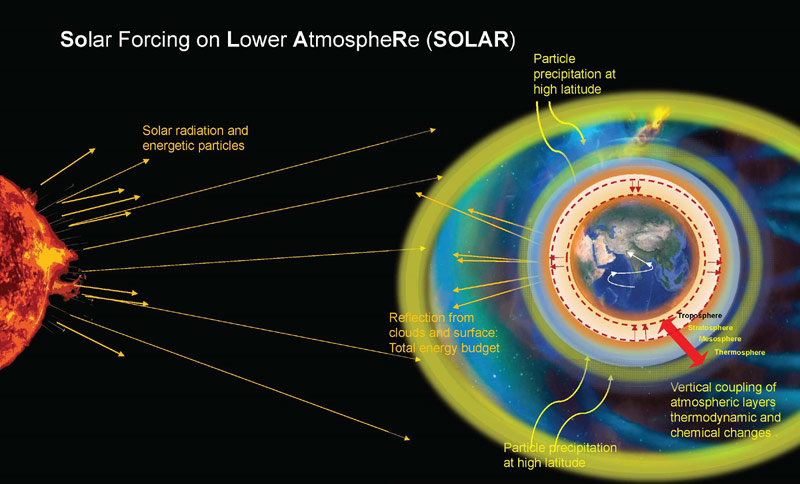Solar forcing On Lower AtmospheRe (SOLAR) (Director’s research Group)
Chief Coordinator : Jayashree Bulusu & Members
The Sun is the primary energy source that drives our Earth’s climate system. While its influence on the ionosphere/thermosphere is relatively well-established, its impact on the lower atmosphere, where weather and climate events occur, is much more complex and subject to ongoing research. When we speak of solar forcing, it generally refers to the fluctuations in the amount of solar energy reaching Earth’s atmosphere in various forms. These variations occur over multiple timescales, from short-term fluctuations associated with solar flares to long-term cycles like the 11-year sunspot cycle. Similarly during periods of geomagnetic disturbances (magnetic storms/ substorms), huge amount of energy gets deposited into Earth’s upper atmosphere over a period of few hours. These processes lead to significant dynamical and chemical changes in the high latitude atmosphere.

The project aims to investigate how the solar forcing affects the lower atmosphere and the possible physical mechanisms driving such effects. This is an essential area in the current scenario of climate change. The focus is to address the variabilities over different temporal and spatial scales that can pave the way for a scientific mechanism of energy translation from upper atmosphere/thermosphere to lower troposphere.
Chief Coordinator : Jayashree Bulusu
Coordinator(s) : Remya Bhanu, Chinmaya K Nayak
Members : A. P. Dimri, Chinmaya K Nayak (CN), Jayashree Bulusu (JB), T Sreeraj (TS), Remya Bhanu (RB) Research Associates and students